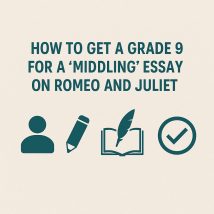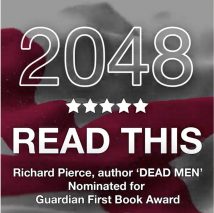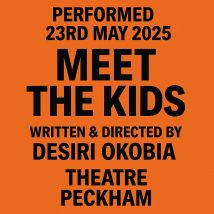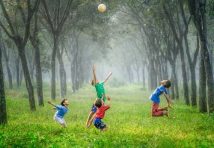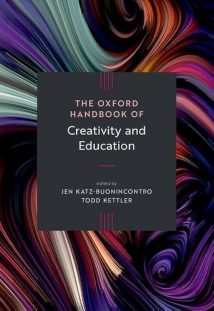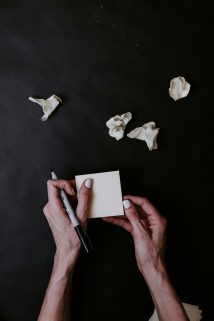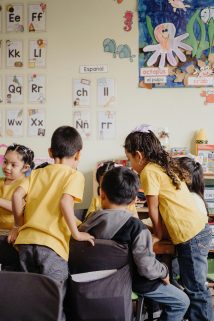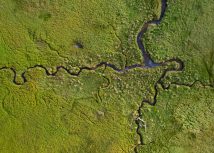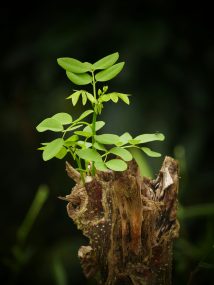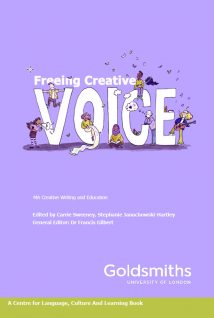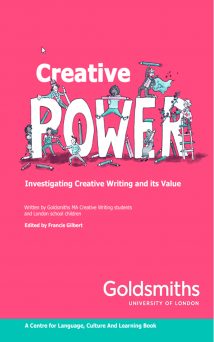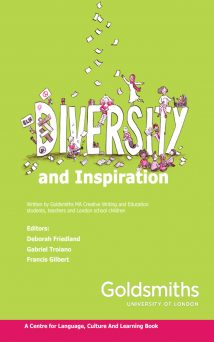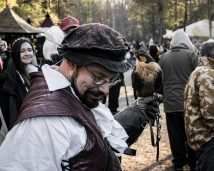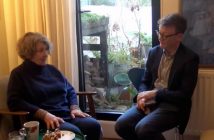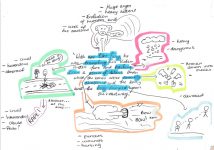for students
Here I post a variety of material for students. You can reorder the table to aid your search by clicking any of the headings.
-
Seven Things I Learnt from Land of the Free? Trump’s War on Press, Protest and Academic Freedom
What does freedom of expression really mean in 2025? On August 5th, I attended a deeply thought-provoking event hosted by Index on Censorship at St John’s Church, Waterloo, where my wife Erica Wagner was one of the speakers. The panel launched the new Index issue titled Land of the Free? and gathered journalists, editors, and activists to reflect on Donald Trump’s legacy and the erosion of civil liberties across the US and UK. From SLAPP lawsuits to the criminalisation of protest, the conversation reminded us that freedom is not a given: it must be defended, questioned, and collectively sustained. This blog distils seven key lessons I took away from the night, ranging from the legacy of the War on Terror to the global assault on so-called “woke” values. #FreedomOfExpression #IndexOnCensorship #LandOfTheFree #ProtestRights #SLAPPs #CultureWars #Democracy #WritersLife #PoliticalWriting #CreativeNonfiction #EricaWagner #FrancisGilbert #HumanRights #SpeakUp #UKPolitics #USPolitics
-
🏅Model GCSE Essay on the Feud in Romeo and Juliet
If you’re teaching or studying Shakespeare’s ‘Romeo and Juliet’, you’ll know that essays about the family feud often hover around a Grade 4, 5 or 6—what examiners might call ‘middling’ or ‘competent’ responses. But with a few targeted improvements, these essays can be transformed into top-grade responses. I’ve updated one of my most popular blog posts to show exactly how to do this, paragraph by paragraph, with comments, grade 9 tips, and clear marking guidance for teachers and pupils alike. The key is to move beyond surface-level understanding and begin thinking like a literary analyst. That means really digging into Shakespeare’s language (AO2), showing a secure knowledge of the play and its themes (AO1), and crucially, thinking about why Shakespeare wrote what he did, and how his audience might have reacted (AO3). This is where the 5Ws strategy—Who, What, Where, When, Why—comes in. For example, instead of simply quoting the Prologue’s “ancient grudge” to describe the feud, a top-grade response will explore the word “ancient” in more depth. What does it suggest about tradition, time, and decay? What kind of audience would Shakespeare have been writing for, and why might he start with such a phrase? A Grade 9 student doesn’t just spot a quote—they zoom in on the language, explain the technique being used, and link it to Shakespeare’s bigger message about love, hate, and fate. I’ve used a visual symbol system in the new version of this post to make each part of the answer easier to teach and understand. A pencil icon stands for thoughtful analysis, a book and quill symbol represents literary and historical context, and a checkmark indicates where a pupil is showing Grade 8–9 thinking. I’ve also added a quiet but clear visual: a student figure at the centre of the learning, reminding us this is about developing real, mindful confidence—not just ticking boxes. This new breakdown works well for teachers modelling essays in class, for pupils revising independently, and for tutors looking for a clear teaching sequence. And if you’re looking for more structured support, I’d recommend my edition of the play, Romeo and Juliet: The Complete Play with Integrated Study Notes and Smart Translation—ideal for exploring language, structure and context in one place. For teachers, The Mindful English Teacher includes ideas for making literary analysis more inclusive, reflective, and emotionally aware. You can view the updated post and download the image resources now at francisgilbert.co.uk, or find the essay thread pinned to my socials. Let me know how you use it, and feel free to tag me with examples of Grade 9 insights from your own pupils!
-
Six Things We Can Learn About Publishing and Navigating the World as a Writer
What does it mean to publish bravely? To speak even when your voice shakes, or is hidden behind a pseudonym? We were honoured to welcome back Nick Bailey, alumnus of the MA in Creative Writing and Education, who opened up a rich, moving conversation about the realities of writing and publishing today. From self-publishing his genre-bending novel 2048 to working with a values-driven indie press, Nick shared not just tips, but truths: how publishing can empower, expose, disguise, and liberate. We heard from participants using pseudonyms to survive racism in education, from writers navigating rejection, and from those reshaping what it means to “be seen.” This blog distils six powerful takeaways — from building creative resilience, to understanding publishing as pedagogy. It’s about voice, not vanity. Process, not product. And why the best reason to publish is because your story needs to be told. Read it in full on my site. Reflect. Share. Teach. Because writing bravely is where publishing well begins. #MindfulPublishing #CreativeWritingEducation #NickBailey #SelfPublishing #IndiePress #PublishingAsPedagogy #MAWritingEducation #WritersOfInstagram #LinkedInWriters #BlueSkyWriters
-
Four Lessons from Meet the Kids at Theatre Peckham
In May, I had the great pleasure of watching a bold, moving and beautifully realised new play by Desiri Okobia, a former Creative Writing student from Goldsmiths. It was one of those evenings that reminded me exactly why this work matters. The play created space for young voices to lead, with care, depth, and honesty. It was a celebration of talent, courage, and creative education at its best — and a moment to witness the remarkable impact of a gifted writer-educator coming into her own.
-
The Mindful Creative Writing Teacher
This blog introduces The Mindful Creative Writing Teacher—my book for anyone teaching or facilitating creative writing, whether in schools, universities, prisons, or community spaces. Drawing on decades of experience, I offer a fresh, practical, and compassionate approach to teaching writing that blends mindfulness, creativity, and social justice. In the blog, I explain why I wrote the book: to move beyond rigid workshop models and embrace a more humane, dynamic, and inclusive pedagogy. The book is filled with real-life case studies, poems, hands-on activities, and reflective prompts designed to help you cultivate creativity, wellbeing, and critical thinking in your classroom. It’s for English teachers, creative writing tutors, and writers alike—especially those looking to empower diverse voices, support reluctant or neurodiverse learners, and find joy in their own writing again. You’ll find strategies for teaching storytelling, feedback, decolonisation, and multimodal writing, as well as guidance on developing your own mindful teaching identity. This blog offers a glimpse into the book’s ethos: writing not just as a craft to be perfected, but as a transformative act of attention, empathy, and expression. If you’re looking to teach writing in a way that’s more authentic, creative, and connected, this book—and blog—are for you.
-
7 Transformative Lessons from First Story’s Creative Writing Approach – A Goldsmiths Reflection
In this blog, I reflect on an inspiring session led by novelist and First Story writer-in-residence Pete Hobbs. Drawing on seventeen years of working with young writers, Pete shared a wealth of practical, playful exercises and a deeply inclusive pedagogy that reimagines creative writing as a space for experimentation, voice, and community. From evoking memory through sensory detail to empowering students to write in their own linguistic registers, his approach offers powerful strategies for educators at all levels. This post captures the session’s key takeaways—and celebrates the joyful, transformative possibilities of writing. It left me rethinking how I teach.
-
5 Ways Creative Writing Can Fuel Creativity
I’ve long believed that creative writing isn’t just for the English classroom—it’s a radical, transformative practice that can fuel creativity across the curriculum. In my new chapter for The Oxford Handbook of Creativity and Education, I explore how freewriting, diagrarting, critical literacy, and compassionate feedback can empower learners of all ages. Drawing on decades of teaching experience and recent research, I show how creative writing can heal, liberate, and inspire. This piece is for educators, writers, and anyone interested in reimagining how we learn and grow through words.
-
Publishing as Pedagogy: Why Creative Writers and Teachers Need to Understand the Industry
In this article, I explore why knowledge of the publishing industry is essential for both creative writers and educators. Drawing on my experience teaching publishing to MA students, I argue that understanding how books are produced, marketed, and circulated can empower writers and transform the way we teach creative writing. This piece is both a call to action and a practical guide for integrating publishing literacy into the creative writing classroom.
-
Five Ways to Decolonise the Teaching of Creative Writing
In April 2025, I had the joy of welcoming back Carinya Sharples—a former student of mine from the MA in Creative Writing and Education I lead at Goldsmiths—for an unforgettable session on Decolonising Creative Writing Pedagogies. Carinya held the space with grace, rigour and radical care, sparking vital conversations about power, voice, and language. In this blog, I share five key strategies that emerged from her talk and my own experience—practical, powerful ways to rethink how we teach creative writing. If you’re ready to challenge norms and embrace liberatory practice, come explore more with me by reading the blog.
-
Four reasons there is a Connected Curriculum at Goldsmiths
Why bring all the students at a university together to learn critical thinking and research skills?
-
Four reasons we should all learn about Green Careers (+ some top job hunting tips!)
A recount of the Green Careers event that I co-ran (with Widening Participation, the Horniman Museum, and Lewisham’s Young People’s Climate Network) in May 2024 at Goldsmiths University.
-
Of Note- Four Ways Taking Notes have Enriched My Life
Notes have helped me remember; they’re my safe space; they’re therapeutic; and they’ve liberated my imagination
-
Freeing Creative Voice
An anthology investigating how educators, creatives, and learners can liberate and uplift their voices through writing, teaching, investigating, and intentional everyday living.
-
Creative Power: Investigating Creative Writing & Its Value
An instructive and inspiring collection written by Masters’ students at Goldsmiths’ university, and pupils from South London schools. Essential reading for anyone interested in finding ways of thriving in a fractured world.
-
Diversity and Inspiration: a fantastic anthology for creative writers & teachers
This book contains many tips for helping teachers of creative writing, written by my students on the MA Creative Writing and Education at Goldsmiths.
-
Becoming the falconer: productive feedback for the redrafting of creative writing
Aspects of the neoliberal education system can preclude the development of young writers. Feedback can be unempathetic, but it can also be productive, creating an internal dialogue that develops the writer over time.
-
Angela Kreeger: Subject of the miracle of modern medicine and psychoanalysis
It is a cold January Sunday afternoon in 2022, but Angela Kreeger’s living room feels gorgeous, and I’m eating far too many slices of a delicious almond cake.
-
Diagrarting: theorising and practising new ways of writing and drawing
To “diagrart” (my neologism combining the words diagrams, dialogue and art), one must write and draw, and believe you are creating art, no matter how crude you think your work to be.
-
Different ways of descending into the crypt: methodologies and methods for researching creative writing
For all creative writers who wish to explore writing processes further, using established research.


